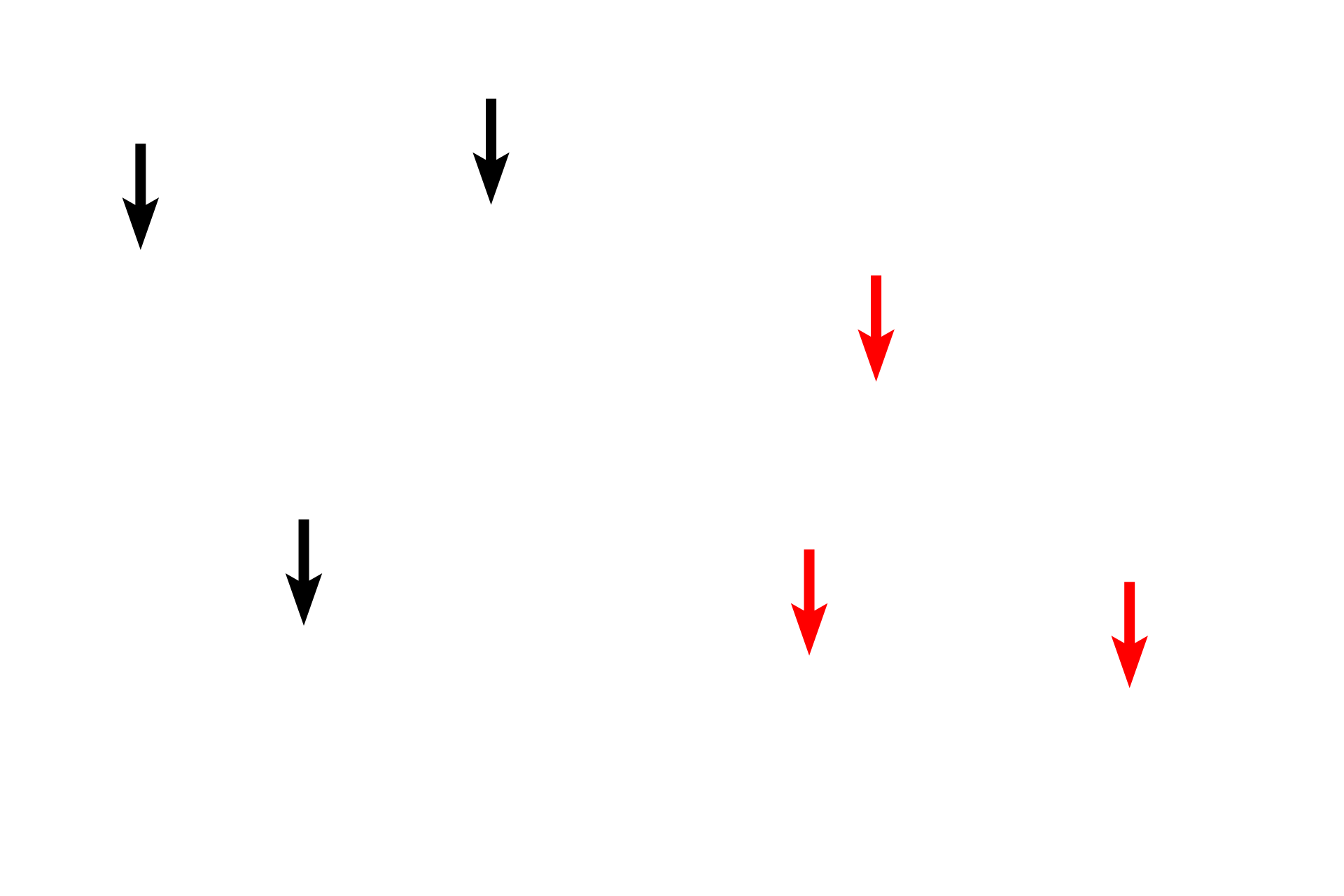
Elastic fibers
Elastic fibers are thin, branched and eosinophilic. They are present in most connective tissues, however, they are usually difficult to differentiate with H & E staining (left panel). The right panel shows similar tissue stained for elastin, a major protein component of elastic fibers that provides fiber elasticity. Elastic fibers are produced by fibroblasts in connective tissues and smooth muscle cells in blood vessels. Ground substance and tissue fluid fills the spaces between fibers and cells. Mesentery 1000x

Elastic fibers
Elastic fibers are thin, branched and eosinophilic. They are present in most connective tissues, however, they are usually difficult to differentiate with H & E staining (left panel). The right panel shows similar tissue stained for elastin, a major protein component of elastic fibers that provides fiber elasticity. Elastic fibers are produced by fibroblasts in connective tissues and smooth muscle cells in blood vessels. Ground substance and tissue fluid fills the spaces between fibers and cells. Mesentery 1000x

Collagen fibers
Elastic fibers are thin, branched and eosinophilic. They are present in most connective tissues, however, they are usually difficult to differentiate with H & E staining (left panel). The right panel shows similar tissue stained for elastin, a major protein component of elastic fibers that provides fiber elasticity. Elastic fibers are produced by fibroblasts in connective tissues and smooth muscle cells in blood vessels. Ground substance and tissue fluid fills the spaces between fibers and cells. Mesentery 1000x

Fibroblasts
Elastic fibers are thin, branched and eosinophilic. They are present in most connective tissues, however, they are usually difficult to differentiate with H & E staining (left panel). The right panel shows similar tissue stained for elastin, a major protein component of elastic fibers that provides fiber elasticity. Elastic fibers are produced by fibroblasts in connective tissues and smooth muscle cells in blood vessels. Ground substance and tissue fluid fills the spaces between fibers and cells. Mesentery 1000x

Mast cell
Elastic fibers are thin, branched and eosinophilic. They are present in most connective tissues, however, they are usually difficult to differentiate with H & E staining (left panel). The right panel shows similar tissue stained for elastin, a major protein component of elastic fibers that provides fiber elasticity. Elastic fibers are produced by fibroblasts in connective tissues and smooth muscle cells in blood vessels. Ground substance and tissue fluid fills the spaces between fibers and cells. Mesentery 1000x

Ground substance
Elastic fibers are thin, branched and eosinophilic. They are present in most connective tissues, however, they are usually difficult to differentiate with H & E staining (left panel). The right panel shows similar tissue stained for elastin, a major protein component of elastic fibers that provides fiber elasticity. Elastic fibers are produced by fibroblasts in connective tissues and smooth muscle cells in blood vessels. Ground substance and tissue fluid fills the spaces between fibers and cells. Mesentery 1000x

Capillaries
Elastic fibers are thin, branched and eosinophilic. They are present in most connective tissues, however, they are usually difficult to differentiate with H & E staining (left panel). The right panel shows similar tissue stained for elastin, a major protein component of elastic fibers that provides fiber elasticity. Elastic fibers are produced by fibroblasts in connective tissues and smooth muscle cells in blood vessels. Ground substance and tissue fluid fills the spaces between fibers and cells. Mesentery 1000x